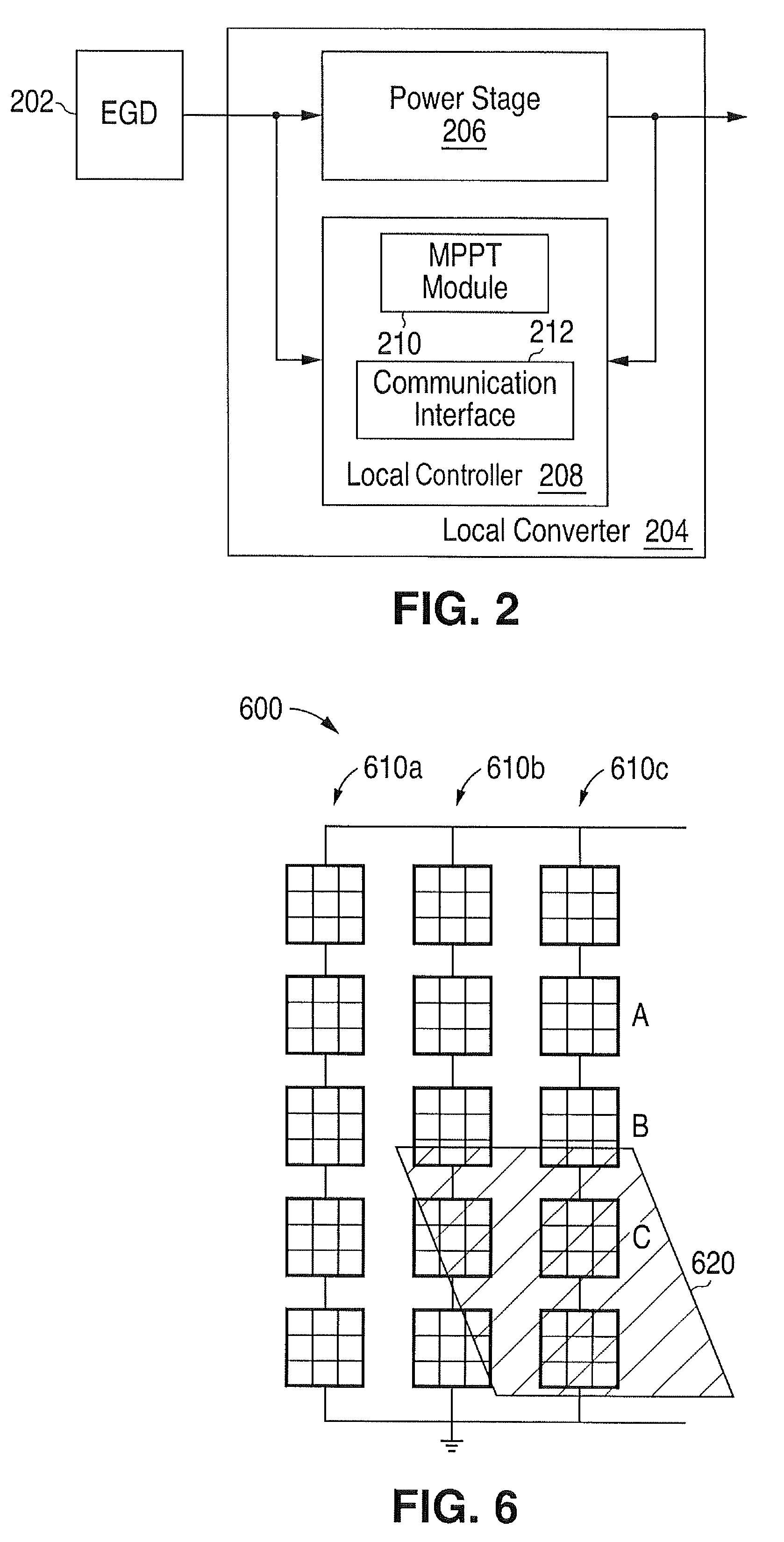Method and system for providing local converters to provide maximum power point tracking in an energy generating system
a technology of energy generating system and local converter, which is applied in the direction of power conversion system, dc-dc conversion, instruments, etc., can solve the problems of mppt for the array as a whole being more complicated, drastic power production drop, and inability to provide accurate mppt techniques
- Summary
- Abstract
- Description
- Claims
- Application Information
AI Technical Summary
Problems solved by technology
Method used
Image
Examples
Embodiment Construction
voltage variation with time for the system of FIG. 9 in accordance with one embodiment of this disclosure;
[0016]FIG. 11 illustrates the activator of FIG. 9 in accordance with one embodiment of this disclosure; and
[0017]FIG. 12 illustrates a method for activating and deactivating the local converter of FIG. 9 in accordance with one embodiment of this disclosure.
DETAILED DESCRIPTION
[0018]FIGS. 1 through 12, discussed below, and the various embodiments used to describe the principles of the present invention in this patent document are by way of illustration only and should not be construed in any way to limit the scope of the invention. Those skilled in the art will understand that the principles of the present invention may be implemented in any type of suitably arranged device or system.
[0019]FIG. 1 illustrates an energy generating system 100 capable of being centrally controlled in accordance with one embodiment of this disclosure. The energy generating system 100 comprises a plura...
PUM
 Login to View More
Login to View More Abstract
Description
Claims
Application Information
 Login to View More
Login to View More - R&D
- Intellectual Property
- Life Sciences
- Materials
- Tech Scout
- Unparalleled Data Quality
- Higher Quality Content
- 60% Fewer Hallucinations
Browse by: Latest US Patents, China's latest patents, Technical Efficacy Thesaurus, Application Domain, Technology Topic, Popular Technical Reports.
© 2025 PatSnap. All rights reserved.Legal|Privacy policy|Modern Slavery Act Transparency Statement|Sitemap|About US| Contact US: help@patsnap.com



